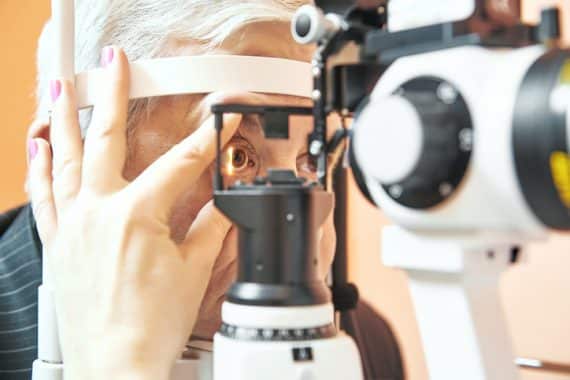Micro-Invasive Glaucoma Surgery
If you are one of the nearly three million Americans affected by glaucoma, you are naturally looking for the best treatment options. Doctors first try eye drop medications to reduce the high internal eye pressure that is characteristic of the disease. If the medications are not effective, surgery is usually the option. Surgeries by their nature are invasive procedures, but a new procedure called micro-invasive glaucoma surgery (MIGS) is great news for our Elmquist Eye Group patients.
What causes glaucoma?
 Open angle glaucoma is the most common form of glaucoma. Elevated pressure inside the eye damages the optic nerve over time, leading to progressive vision loss. The pressure damages the nerve fibers in the optic nerve, so the signals from the eye to the brain cannot be properly transmitted, thus affecting eyesight. While eyedrop medications have drastically improved over the years, surgery is still the treatment for high-risk patients. Like any surgery, there are risks involved.
Open angle glaucoma is the most common form of glaucoma. Elevated pressure inside the eye damages the optic nerve over time, leading to progressive vision loss. The pressure damages the nerve fibers in the optic nerve, so the signals from the eye to the brain cannot be properly transmitted, thus affecting eyesight. While eyedrop medications have drastically improved over the years, surgery is still the treatment for high-risk patients. Like any surgery, there are risks involved.
With the MIGS procedure, our eye surgeons use a stent that is roughly the size of an eyelash, placing it into the trabecular network which serves as the drainage system for the eye. When the internal fluid can remain open and properly drain, the internal pressure inside the eye is lowered. When the pressure is lowered, there is less likelihood that optic nerve damage will occur.
Tell me more about MIGS
The MIGS procedure is much the same as using a stent in heart surgery, yet the MIGS stent is much smaller and therefore far less invasive. The micro-stent MIGS procedure usually means that patients can reduce the number of eyedrop medications they are currently using to manage their glaucoma.
Our surgeons can even insert the MIGS stent device during cataract surgery. If you are over age 60, you may have already started forming cataracts in one or both eyes. After age 75, many of our Elmquist patients have cataracts that significantly interfere with vision. Surgery is the only way to repair a cataract, but patients who need cataract surgery can have the combined cataract-MIGS procedure.
Cataract surgery is performed on one eye at a time, and generally takes about 10 minutes. Placement of the MIGS stent is done after the cataract portion of the surgery is complete, and generally only takes a few more minutes. The addition of the stent has no impact on the success of the cataract procedure.
The Elmquist expertise
Our board-certified, fellowship-trained eye surgeons are glaucoma and cataract experts. If you have one or both of these eye conditions, come in and talk to us. We want to provide you information on this revolutionary and exciting procedure. We will determine whether you are an eligible candidate and discuss all the options with you, whether that be cataract surgery alone, glaucoma surgery alone or the combination of procedures.
With the micro-invasive glaucoma surgery, our Elmquist team has entered a new era of surgical management of glaucoma. Please give our staff a call or schedule your initial appointment on the Elmquist website. We want you to be our next new patient.
